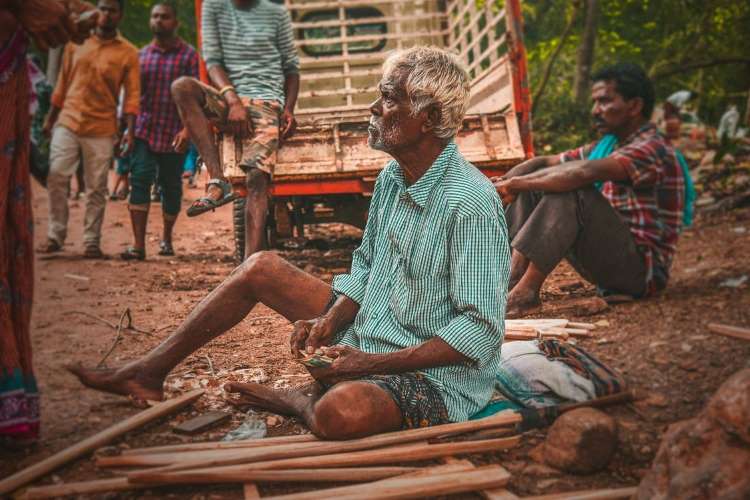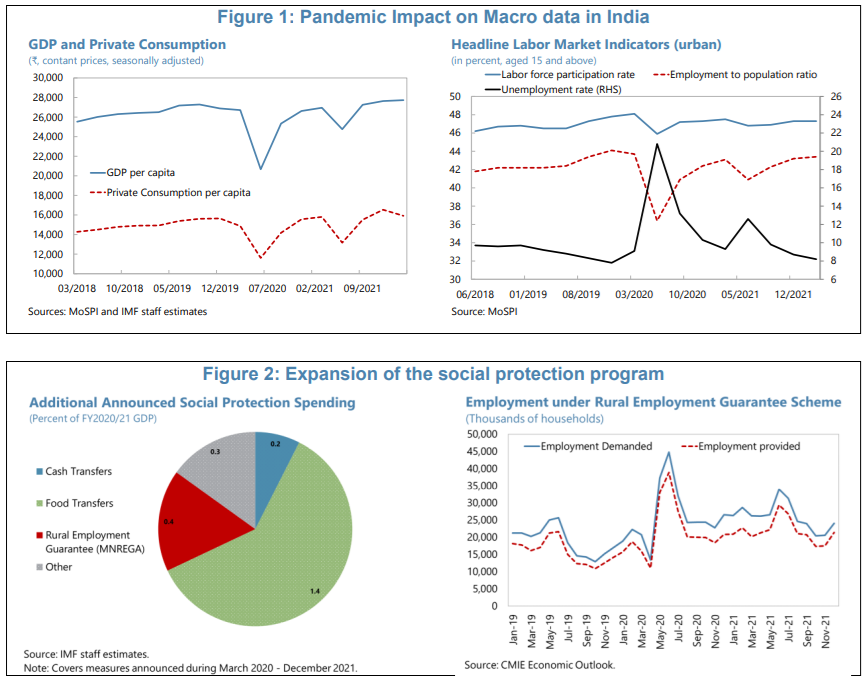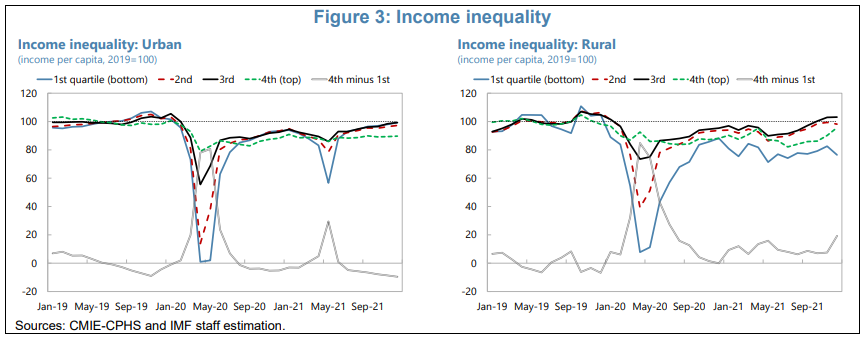
The COVID-19 pandemic brought unprecedented challenges to economies around the world, and India was no exception. An IMF working paper, Inequality and Poverty in India: Impact of COVID-19 Pandemic and Policy Response, examined the dynamics of poverty and inequality in India during the pandemic. This article discusses the key findings of the paper and India’s ongoing efforts to alleviate poverty and reduce inequality.
The study acknowledges India’s significant progress in reducing poverty over the years. Between 2004 and 2011, World Bank estimates indicated a notable decline in the poverty rate, from 40% to 20%. However, a lack of official data after 2011 left researchers wondering what transpired in the years that followed.
Then came the pandemic, which raised concerns about inequality and poverty. The IMF working paper reveals that during the first and second waves of the pandemic, India experienced sharp declines in GDP and per capita private consumption. GDP data and labour market indicators initially showed a swift recovery after each wave. Still, the study suggests that these macroeconomic figures might have concealed the distributional impact of the pandemic on individuals and households.
READ I Income tax data reveal soaring income inequality
Economic downturn and recovery
Digging deeper into the data, the study highlights that the labour market was severely impacted, with a significant drop in employment rates and a spike in unemployment. For instance, following the first wave of the pandemic, the employment-to-population ratio decreased by 7.3 percentage points. Additionally, the unemployment rate spiked by about 20% in some areas. These numbers underscore the severe disruption caused by the pandemic on people’s livelihoods.
The paper, authored by Elif C Arbatli Saxegaard, Mattia Coppo, Nasser Khalil, Shinya Kotera, and Filiz D Unsal, focuses on three crucial questions: What happened to poverty and inequality during the pandemic? What were the key channels through which the pandemic impacted poverty? What was the potential impact of government social assistance schemes during the pandemic?


The research reveals that inequality increased significantly during the initial phase of the pandemic. To illustrate, the study used income quartiles, showing that the bottom quartile experienced almost zero income while the top quartile’s income reduction was about 20%. This income disparity contributed to a noticeable increase in income inequality during the pandemic. The study also examined inequality in terms of consumption, finding that the impact was milder, with slight improvements noted in certain areas.
The study addresses the issue of poverty. Using the World Bank’s poverty line of $1.9 PPP, it was found that poverty levels increased drastically during the lockdown period, reaching more than four times the 2019 levels. By the end of 2021, the number of people under the poverty line had improved but remained a concern. These statistics illustrate the harsh reality faced by many vulnerable individuals and families during the pandemic.
Channels of impact
To understand the characteristics affecting poverty and income changes during the pandemic, the study uses regression analyses. It found that lower education levels and informal employment were associated with a higher probability of falling into poverty. For example, households with lower educational attainment were more likely to experience income reductions, highlighting the importance of investing in skills development.
The study reveals that informal employment, characterised by temporary and contract work, was a significant factor in poverty risk. These findings underscore the need to promote formalisation and job security to mitigate the adverse effects of future economic shocks.
The study simulated the potential impact of social assistance schemes, focusing on food subsidies provided by public distribution systems. These schemes played a crucial role in supporting vulnerable populations during the pandemic. For example, the study estimated that food subsidies lowered the number of people below the poverty line by about 25% to 30% on average before the pandemic. However, the study highlights the need to continuously improve targeting to enhance the effectiveness of fiscal expenditure. While these social protection measures were effective, the challenge remains to ensure that assistance reaches those who need it most efficiently.
The study explores a hypothetical scenario of redistributing subsidies from higher-income households to lower-income ones. Surprisingly, this redistribution scenario did not lead to a significant reduction in poverty during the pandemic, suggesting that providing support broadly during times of crisis might be more effective.
The IMF working paper sheds light on the complex dynamics of poverty and inequality in India during the pandemic. While the country demonstrated resilience in its recovery efforts, the study underscores the importance of targeted support, skill development, and formalisation to address the root causes of poverty and inequality. As India continues to navigate these challenges, policymakers must consider the study’s findings to build a more inclusive and resilient future for all citizens. The statistics and evidence presented in the study highlight the urgency of these efforts in the post-pandemic era.
(This article is the edited transcript of a presentation made by Shinya Kotera, an economist with International Monetary Fund, at an online discussion organised by EGROW Foundation, a Noida-based think tank.)

